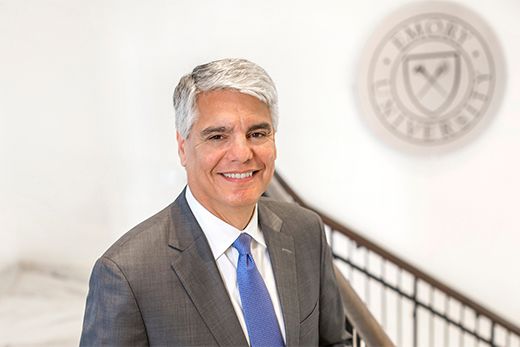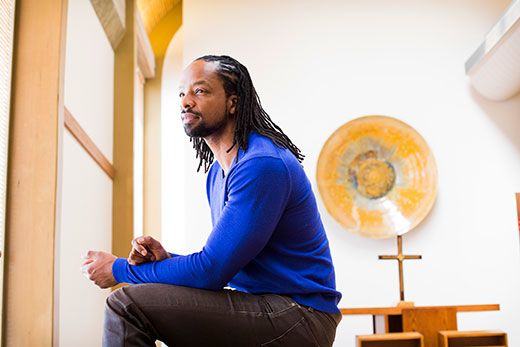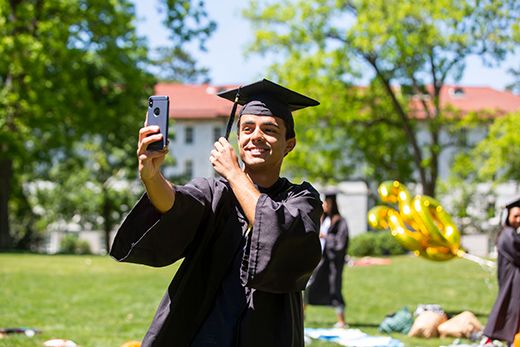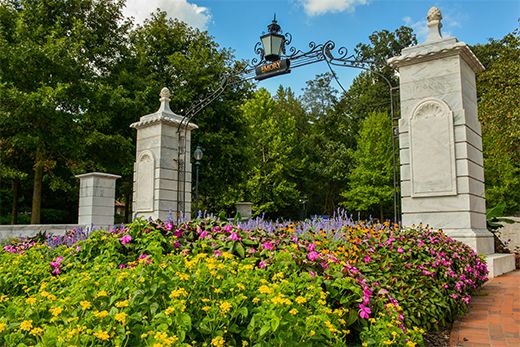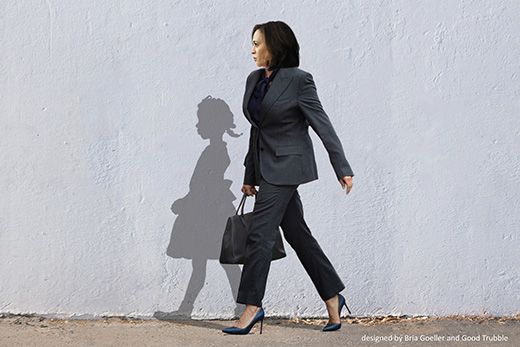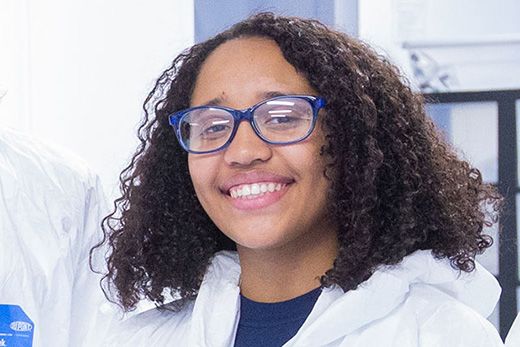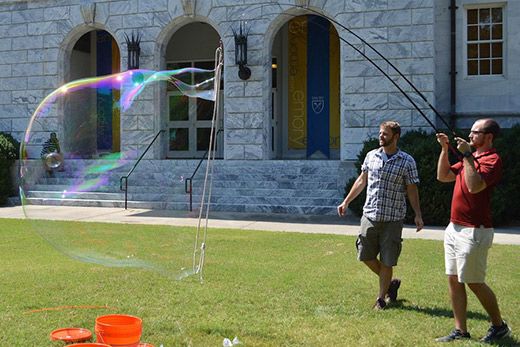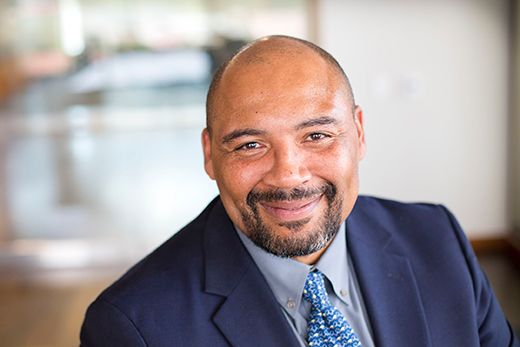Beyond COVID-19
10 of Emory’s Most-Read Stories of 2020

A new president, a Pulitzer Prize, outstanding rankings and compelling research by both faculty and students — all serve as proof that while COVID-19 dominated headlines around the world and at Emory, the life and work of the university continued undaunted and undeterred.
Here are 10 of Emory’s most-read stories of 2020 that were not about the novel coronavirus. You can learn more about Emory’s biggest news about COVID-19, and view the impact of the pandemic through photos, here.
1. Emory's new president: Right time. Right place. Right leader.
Gregory L. Fenves began his tenure as Emory’s 21st president on Aug. 1, bringing an extraordinary set of skills and experience to lead the university through one of the most challenging times in higher education.
For Fenves, however, it is also a catalytic moment — one charged with possibilities for innovation and discovery, collaboration and engagement. He sees universities as critical players in finding the way forward: pivotal change agents poised for just this kind of transformative, impact-driven work.
2. Emory professor Jericho Brown wins Pulitzer Prize for poetry
Jericho Brown, Emory’s Winship Distinguished Research Professor in Creative Writing, won the 2020 Pulitzer Prize for Poetry for his latest collection, “The Tradition.” The prize, awarded virtually in May, is given annually to a “distinguished volume of original verse by an American author.” In selecting Brown’s book for the honor, the Pulitzer board called it “a collection of masterful lyrics that combine delicacy with historical urgency in their loving evocation of bodies vulnerable to hostility and violence.”
The coveted award puts Brown, director of Emory College’s nationally renowned Creative Writing Program, in the company of literary luminaries such as poets Tracy K. Smith, Natasha Trethewey, Mary Oliver, Rita Dove, Sylvia Plath, Robert Penn Warren and Robert Frost, and ensures his work as part of the canon of American literature.
3. Emory’s Class of 2024: Extraordinary times, extraordinary students
Although students finished their senior year of high school while sheltering at home, they looked forward to the future – remaining eager about college and their march toward independence and adulthood.
While they completed their high school years under exceptional circumstances, the students comprising Emory’s Class of 2024 are also exceptional in their own right. They represent some of the most academically talented students in the world, students who chose a rigorous pathway through high school while still being engaged with the world around them. Their curiosity, passion and interests personify Emory’s mission: to create, preserve, teach and apply knowledge in the service of humanity.
Read more about the Class 0f 2024.
4. Commencement and Match Day send resilient graduates into the world
Time-honored traditions such as Commencement and the School of Medicine’s Match Day looked different in 2020, but adapted to mark the milestones in new ways.
Emory’s 175th Commencement celebrated the achievements of the Class of 2020 with virtual ceremonies for each undergraduate and graduate school. As they prepared to begin their own next chapters amid the challenges of the global pandemic, Emory’s newest graduates were urged to meet all that awaits them with hope, creativity and a willingness to shift long-held narratives, setting aside fear and discomfort to confront the inequities that surround us.
While the tearing open of envelopes on Match Day 2020 was replaced by a special email that hit in-boxes at exactly noon, the flood of heartfelt congratulations for Emory’s fourth-year medical students was as genuine as always. So was the excitement of the 138 medical students awaiting their residency assignments. Undaunted by the pandemic, they transition to the next step of their training knowing that the world desperately needs their expertise.
5. Emory ranks among the best universities and best hospitals
Emory University ranked 21st among the nation’s top universities in the 2021 Best Colleges guidebook from U.S. News and World Report. Emory also was listed as 23rd among national universities offering the best value to students based on a combination of academic quality and cost. Additionally, the university was cited as 25th for best undergraduate teaching, and among schools with the largest percentage of international undergraduates at 15%.
The university’s graduate and professional schools and programs also ranked among the best in the nation, according to analysis and surveys in U.S. News and World Report’s 2021 edition of the “America’s Best Graduate Schools” guide.
As a testament to the high-caliber care Emory Healthcare provides, three Emory hospitals were named as top Georgia and U.S. hospitals in Newsweek’s list of World’s Best Hospitals 2020, which ranks more than 1,500 leading hospitals in 21 countries.
In Newsweek’s “Best Hospitals – USA” list, hospitals are ranked nationally and by state. In Best-in-State rankings, Emory University Hospital, Emory Saint Joseph’s Hospital and Emory Johns Creek Hospital ranked as the top three hospitals in Georgia. Nationally, Emory University Hospital ranked No. 22, Emory Saint Joseph’s Hospital ranked No. 93 and Emory Johns Creek Hospital ranked No. 197.
6. Emory grad creates viral image of Kamala Harris and Ruby Bridges
The image is simple: Vice President-elect Kamala Harris, clad in a dark suit and heels, strides past a wall with her eyes locked on the horizon. The shadow she casts is that of then-6-year-old Ruby Bridges, who integrated her New Orleans elementary school in 1960.
The artist behind the image – which went viral in the days after the election – is Bria Goeller, who graduated with highest honors from Emory College of Arts and Sciences in December 2019. She designed the artwork in October for Carl Gordon Jones, founder and owner of the satirical clothing group WTF America-Good Trubble.
7. Ancient DNA lab maps little-explored human lineages
Emory became home to one of only a handful of ancient DNA labs in the country and one of the few in the world involved in every step of the complex process of solving mysteries surrounding ancient remains. Headed by assistant professor of anthropology John Lindo, the state-of-the-art facility explores how environmental changes, including those caused by European contact, affected the biology of Indigenous and other populations of the Americas. The lab currently is analyzing remains unearthed in Brazil that are around 10,000 years old, near the date when people first arrived in South America.
8. Man on fire: Surviving the unsurvivable
What began as an evening motorcycle ride with friends ended for Jalen Richardson with a horrific accident on Interstate 20 and transport to the Grady Burn Center. With third-degree burns covering 60-70% of his body, Richardson began the arduous journey to physical and emotional healing with help from Emory physicians and other caregivers at Grady, a service dog named Shadow and his National Guard unit.
9. Physics of giant soap bubbles: Emory scientists burst secret of fluid mechanics
A study inspired by street performers making gigantic soap bubbles led to a discovery in fluid mechanics: Mixing different molecular sizes of polymers within a solution increases the ability of a thin film to stretch without breaking. The findings by Emory physicists could potentially lead to improving processes such as the flow of oils through industrial pipes and the clearance of polluting foams in streams and rivers.
10. Pellom McDaniels: Lifting every voice
In April the Emory community mourned the sudden passing of Pellom McDaniels III, curator of African American collections at the university’s Stuart A. Rose Manuscript, Archives and Rare Book Library.
McDaniels earned both his master of arts and PhD in American Studies from Emory’s Institute of Liberal Arts, after a career as a National Football League defensive lineman for the Kansas City Chiefs and Atlanta Falcons. He then joined the University of Missouri-Kansas City as an assistant professor in history.
McDaniels returned to Emory as an assistant professor in the Department of African American Studies in Emory College and the associate curator of African American collections for the Rose Library. He became the full-time curator of the collections 2018.
Read more: Lifting every voice: The inspiration and impact of Pellom McDaniels III



